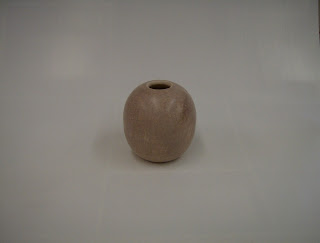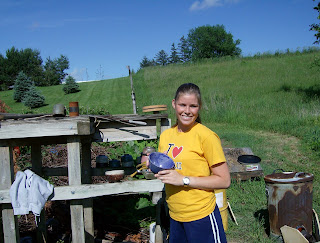 Loading the barrel.
Loading the barrel.First I dumped a medium-sized garbage bag of sawdust in the bottom of the barrel and placed my pots on top of that. The sawdust I got for free from a local lumberyard.
Next we sprinkled plant fertilizer around the pots. From what I've heard and read about, the plant fertilizer helps promote different flashes of color on the pots. Ok. I'll try it--$4.00 for a box of generic stuff at WalMart.
The next sprinkling was copper carbonate, purchased from a ceramics supply distributor. Thats about $7.00 bucks a pound and it is the greenish powder that is sprinkled next to and on top of the pottery. I was going to add some chicken bones and bannana peels, as one internet site suggested, but I was out of chicken bones and the peels were forgotten in the freezer at home. Oh well.
And finally, at the three o'clock position--a piece of copper pipe. This was Johns addition. I'm not sure what he thought it would or might do. In the end the pipe appeared to do nothing, as it was fully intact after the ashes were cleared.
Now on to the next step.







